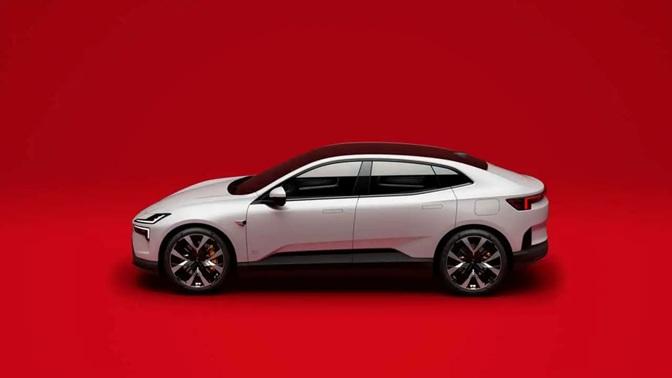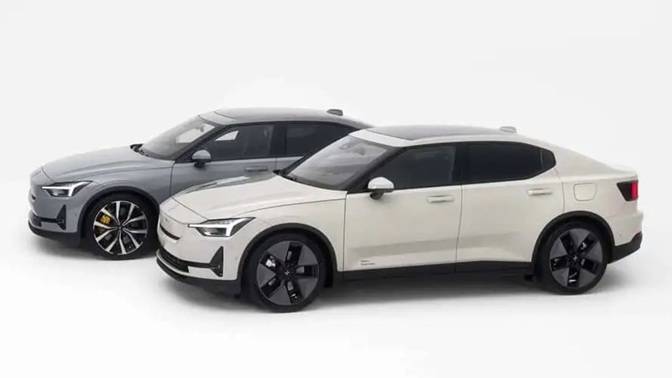Polestar Pulls Back in China: What It Means for the EV Brand’s Future
Polestar, the electric vehicle brand with Scandinavian roots and Chinese ownership, seems to be hitting the brakes in the world’s largest EV market — China. While global sales are seeing a bounce back, what’s happening in China tells a very different story. Let’s unpack what’s going on, why it matters, and what it means for the future of this ambitious EV player.

Polestar Quietly Cuts Back in China
In a surprising but quiet move, Polestar has shut down two-thirds of its stores in China. Just a year ago, it had 36 retail locations across the country — now, only 10 stores remain, as revealed by the company’s own car-buying app.
Even more telling is that Polestar is pulling away from its joint sales operations in China. It’s not calling this a full withdrawal, but it’s clear the company is making a major strategic shift. According to Polestar CEO Michael Lohscheller, the brand is simply “prioritizing certain markets,” not giving up on China entirely. But from the outside looking in, the signs of retreat are hard to miss.
There are a few major reasons why Polestar is struggling in China — and they reflect broader challenges that foreign EV brands are facing there.
1. Intense Local Competition
China’s EV market is ultra-competitive. In 2024 alone, 12.9 million New Energy Vehicles (NEVs) were sold there, and Polestar accounted for just 3,120 of those. That’s a tiny fraction.
The market is dominated by homegrown giants like BYD, Geely, Xpeng, Li Auto, and even Xiaomi — all of which are innovating fast, building cheaper EVs, and adding high-tech features that local buyers love. Simply put, Chinese brands are outpacing global ones in their own backyard.
2. Identity Crisis Within Its Own Parent Group
Polestar is part of Geely Group, which also owns several other EV brands — including Zeekr, which has been more successful in China. So why buy a Polestar when a similar model from the same parent company is already performing better, and often cheaper?
Despite being manufactured in China, Polestar operates more like a European brand — and that makes it feel a bit out of place in a market where local players are setting the tone.
3. Polestar’s Rough Ride in 2024
Last year wasn’t exactly smooth sailing for Polestar. Sales slowed down, profit margins were tight, and tariffs and global economic pressures didn’t help either. The brand faced pressure across multiple markets, and China just wasn’t delivering results.

Is This the End for Polestar in China? Not Quite.
Despite the downsizing, Polestar insists it’s not abandoning China entirely. But let’s be real: when you shrink your retail presence by over 70%, it’s a major pivot. Instead of fighting a losing battle, Polestar is shifting focus to markets where it sees stronger growth potential. This is a smart move — especially for a brand that needs to carve out its identity in a crowded EV world.
Where Is Polestar Headed Now?
The company is looking toward Europe and the United States for its next phase of growth.
🔹 Europe: Key Focus on the UK and France
CEO Michael Lohscheller highlighted the UK and France as priority markets. These are regions where EV adoption is on the rise, and Polestar’s clean, minimalist design language might resonate more strongly.
🔹 U.S. Expansion Plans
In the U.S., Polestar has already begun a major retail expansion. At the end of 2024, it announced plans to grow its network from 35 to nearly 60 locations.
But here’s the clever part: instead of building from scratch, Polestar is teaming up with Volvo’s existing dealer network to make that happen. This gives Polestar a big visibility boost and taps into an already loyal customer base.
There’s still reason for optimism.
In the first quarter of 2025, Polestar reported a 76% increase in global sales — a sign that things are turning around. But with China now accounting for just 7% of Polestar’s 2024 sales, it’s clear the brand needs to grow elsewhere to survive and thrive.
To do that, Polestar must:
- Push Polestar 3 and Polestar 4 sales globally
- Stand out from rivals like Volvo, Tesla, and Cadillac
- Build strong brand recognition, especially in the US and Europe
This next chapter will be about smarter growth, stronger identity, and sharper focus.
Key Takeaways
✅ Polestar has cut back from 36 to just 10 stores in China
✅ The brand is pulling out of joint sales operations in the country
✅ China’s EV market is ultra-competitive, favoring local brands
✅ Polestar sold only 3,120 cars in China in 2024 — out of 12.9 million total NEVs
✅ It’s now focusing on growth in Europe (UK & France) and the US
✅ Partnering with Volvo dealers is helping its U.S. expansion
✅ Q1 2025 global sales were up 76%, but China is no longer the priority
Polestar’s quiet retreat from China isn’t a sign of defeat — it’s a sign of strategic realignment. The brand isn’t trying to win everywhere. Instead, it’s doubling down on markets where it has a better shot at growth, recognition, and success.
It’s a reminder that even in a booming EV industry, smart choices matter more than size. With the right moves, Polestar may still become a global name — just not on China’s turf.
Related Post
